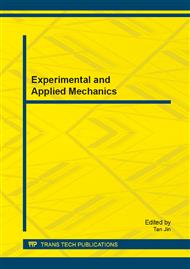[1]
Council of Europe, in: Global Citizenship Education: Position Paper (2008).
Google Scholar
[2]
UNESCO, Citizenship Education, in: Teaching and Learning for a Sustainable Future, mod. 7 (2010).
Google Scholar
[3]
K. McDonough, W. Feinberg: Citizenship and Education in Liberal-Democratic Societies: Teaching for Cosmopolitan Values and Collective Identities, Oxford University Press, New York (2006).
DOI: 10.1093/0199253668.001.0001
Google Scholar
[4]
A. Reid, B. B. Jensen, J. Nikel, V. Simovska: Perspectives on Education and the Environment in: Participation and Learning, Health and Sustainability, Springer, Dortrecht (2008).
DOI: 10.1007/978-1-4020-6416-6_1
Google Scholar
[5]
G. H. Bruntland: Our Common Future: The world commission on environment and development, Oxford: Oxford University Press (1987).
Google Scholar
[6]
F. Feldmann: A parte que nos cabe: consumo sustentável?, in: Meio ambiente no século 21. Coordenação de André Trigueiro. 5ªed, Campinas, SP: Autores Associados (2008).
Google Scholar
[7]
R. C. Dorf: Technology, Humans, and Society: Toward a Sustainable World, Academic Press, USA (2001).
Google Scholar
[8]
J. He: Suitable Methods of Waste Separation in: Advances in Environmental Technologies in: Advanced Materials Research, Vols. 726-731, pp.2975-2978. Trans Tech Publications, Switzerland (2013).
DOI: 10.4028/www.scientific.net/amr.726-731.2975
Google Scholar
[9]
P. D. L. Castro, I. C. Panek, M. L. M. Okumura, O. Canciglieri Junior: O Desenvolvimento Integrado ee Produto Orientado para a Tecnologia Assistiva e a Sustentabilidade in: 9º CBGDP Congresso Brasileiro de Gestão e Desenvolvimento de Produtos, Natal. A Criatividade e a Gestão do Desenvolvimento de Produtos Inovadores e Sustentáveis. São Paulo: IGDP (2013).
DOI: 10.11606/d.12.2020.tde-19122019-154847
Google Scholar
[10]
L. Zhou, Q. Zhang: Research on the recycling logistics Network Design of renewable resources in China, in: Environmental Science and Materials Engineering, in: Advanced Materials Research, Vols. 573-574, pp.992-995. Trans Tech Publications, Switzerland (2012).
DOI: 10.4028/www.scientific.net/amr.573-574.992
Google Scholar
[11]
World Health Organization, The World Bank: World report on disability 2011. Switzerland, WHO Press (2011).
Google Scholar
[12]
World Health Organization: Visual impairment and blindness, Fact Sheet n. 282. Retrieved June 30, 2012. (2012).
Google Scholar
[13]
N. Back, A. Ogliari, A. Dias, J. C. Silva: Projeto integrado de produtos: planejamento, concepção e modelagem. Barueri, SP: Manole (2008).
Google Scholar
[14]
M. L. M. Okumura, O. Canciglieri Junior: O Desenvolvimento de Produtos envolvendo a Tecnologia Assistiva por meio de Estudo de Caso Múltiplo, in: 9º CBGDP Congresso Brasileiro de Gestão e Desenvolvimento de Produtos, Natal, in: A Criatividade e a Gestão do Desenvolvimento de Produtos Inovadores e Sustentáveis. São Paulo: IGDP (2013).
DOI: 10.11606/d.12.2020.tde-19122019-154847
Google Scholar
[15]
M.L.M. Okumura: The concurrent engineering applied to the design of integrated product development inclusive: a proposed conceptual framework (in Portuguese). Master Dissertation in Production Engineering and Systems, PPGEPS- PUCPR, Curitiba (2012).
Google Scholar
[16]
J. A. ALANO, Manual sobre a construção e instalação do aquecedor solar com descartáveis. Prêmio Super Ecologia: Tubarão, SC (2004).
Google Scholar
[17]
C. SILVA, T. M. SOUZA: Desenvolvimento de Sistema para Dimensionamento do Aquecedor Solar Popular de Água, Revista Sodebras, Volume 7 - n73, Jan. (2012).
Google Scholar


